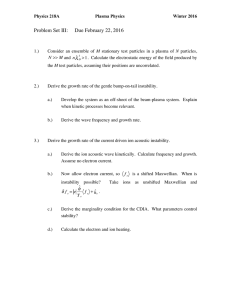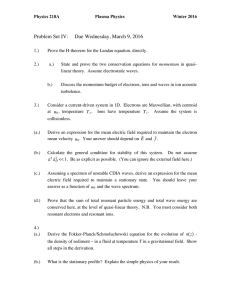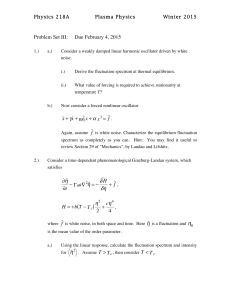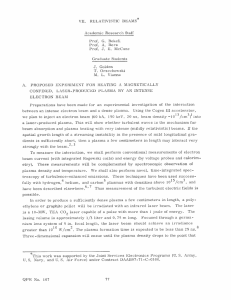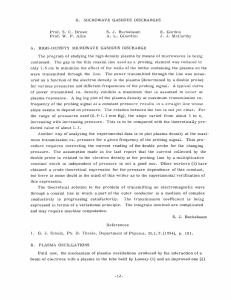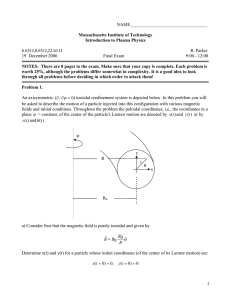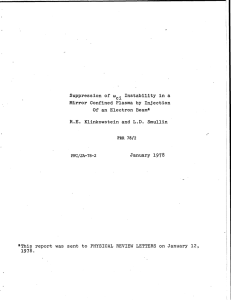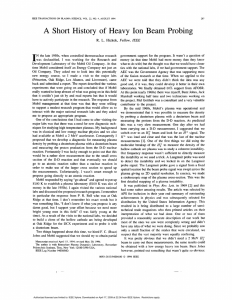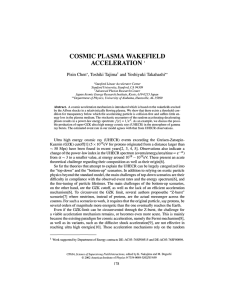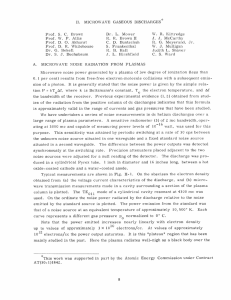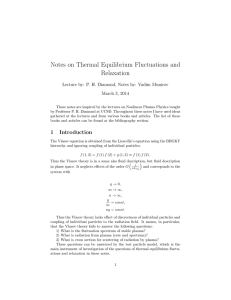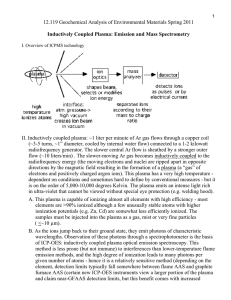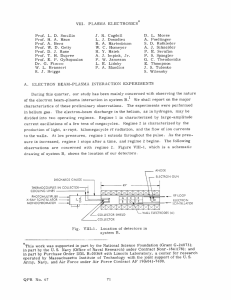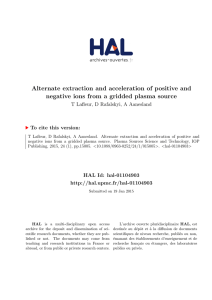Problem Set I: Due Wednesday, January 20, 2016
advertisement
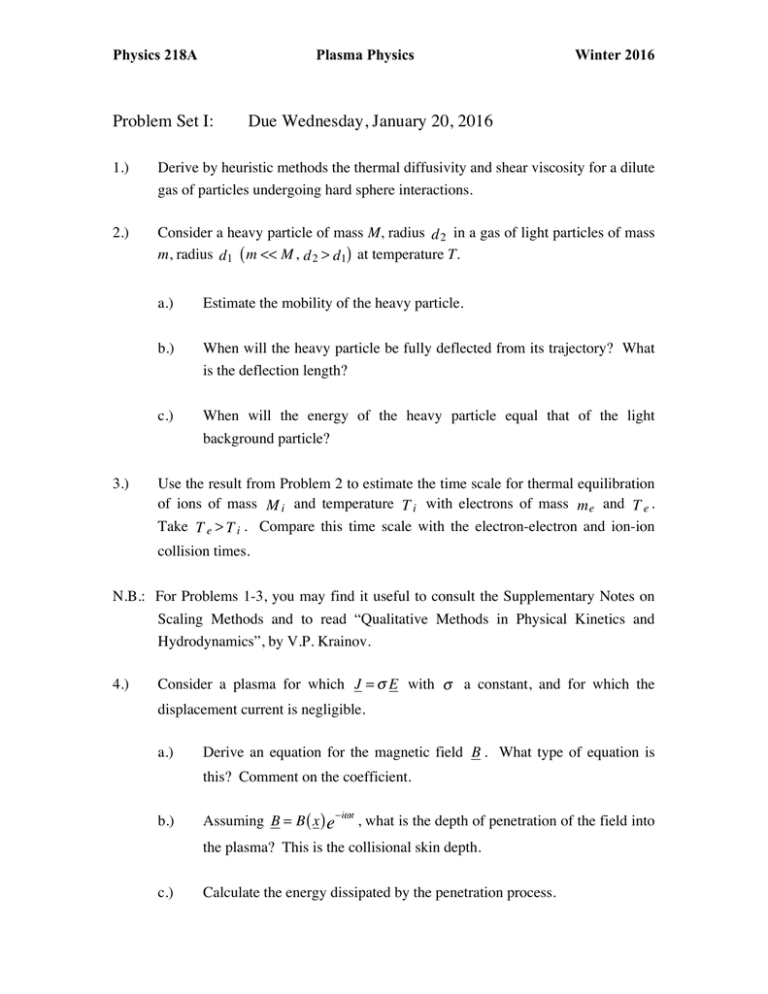
Physics 218A Plasma Physics Problem Set I: Winter 2016 Due Wednesday, January 20, 2016 1.) Derive by heuristic methods the thermal diffusivity and shear viscosity for a dilute gas of particles undergoing hard sphere interactions. 2.) Consider a heavy particle of mass M, radius d 2 in a gas of light particles of mass m, radius d1 ( m << M , d 2 > d1) at temperature T. 3.) a.) Estimate the mobility of the heavy particle. b.) When will the heavy particle be fully deflected from its trajectory? What is the deflection length? c.) When will the energy of the heavy particle equal that of the light background particle? Use the result from Problem 2 to estimate the time scale for thermal equilibration of ions of mass M i and temperature T i with electrons of mass m e and T e . Take T e > T i . Compare this time scale with the electron-electron and ion-ion collision times. N.B.: For Problems 1-3, you may find it useful to consult the Supplementary Notes on Scaling Methods and to read “Qualitative Methods in Physical Kinetics and Hydrodynamics”, by V.P. Krainov. 4.) Consider a plasma for which J = σ E with σ a constant, and for which the displacement current is negligible. a.) Derive an equation for the magnetic field B . What type of equation is this? Comment on the coefficient. b.) Assuming B = B ( x ) e−iω t , what is the depth of penetration of the field into the plasma? This is the collisional skin depth. c.) Calculate the energy dissipated by the penetration process. Physics 218A d.) 5.) Plasma Physics Winter 2016 Calculate the corresponding penetration depth for a collisionless plasma, retaining displacement current effects, as discussed in class. Assume ω < ω pe . Consider a beam of electrons moving at constant speed V 0x̂ . The beam is shot into a background plasma. The beam has density n. Take n b << n 0 , where n 0 is the density of the background plasma. a.) What are the dielectric function and wave frequency for waves in the beam alone? Discuss the energy of these waves. Why can the energy be negative? b.) Now derive the dielectric for plasma waves in the beam + plasma system. Discuss the result. c.) Take n b = n 0 . Investigate the stability of the system by going to a frame moving at − (V 0 2 ) x̂ . 6.) Derive the dispersion relation for an ion-acoustic wave for the case of warm ions. Take ions adiabatic and electrons isothermal. Why is this reasonable? 7.) Read the classic paper by P. Debye, posted under Supplementary Material. Write a 1-2 page summary. Be prepared to present this to the class. Be sure to answer: o Why was Debye driven to confront screening processes? o What was the impact of screening on the colloidal aggregation process he was studying? N.B.: You may also find it useful to consult the posted article by Chandrasekhar.


